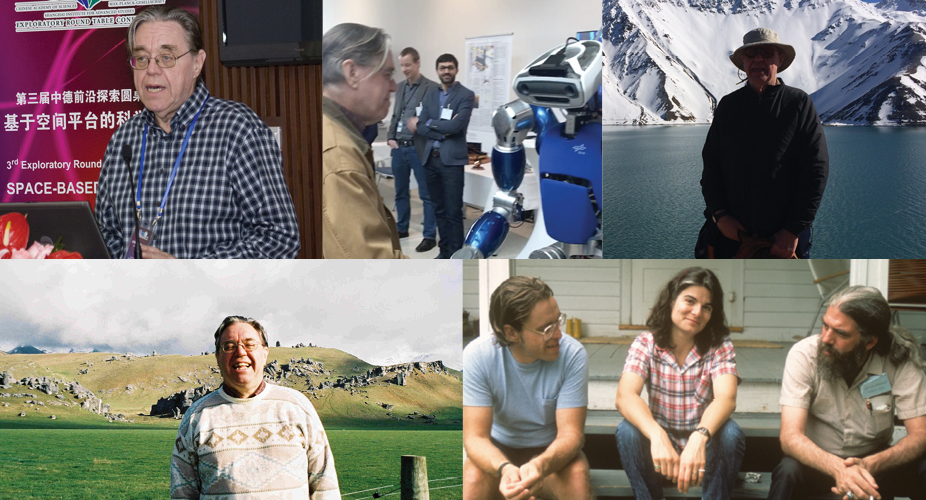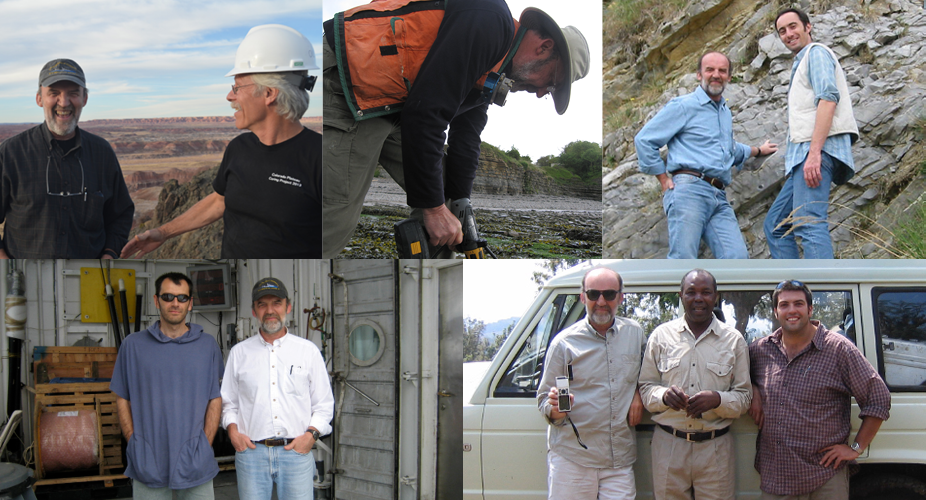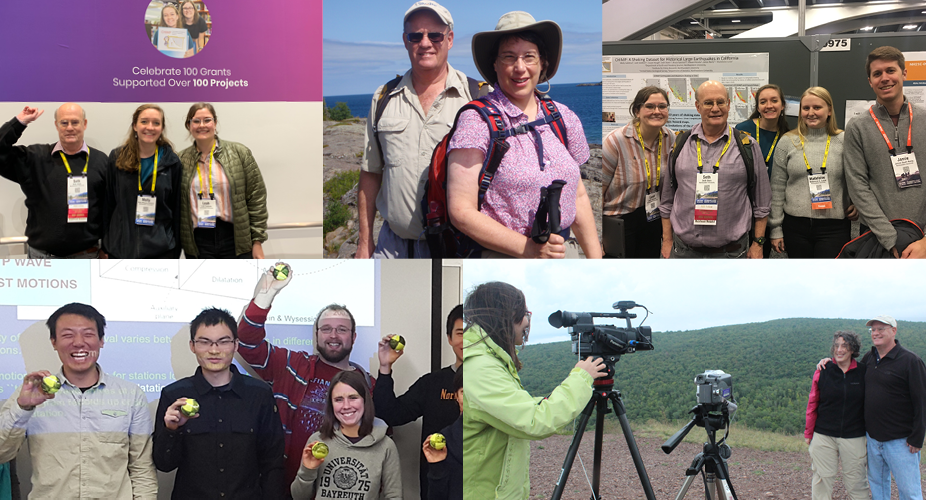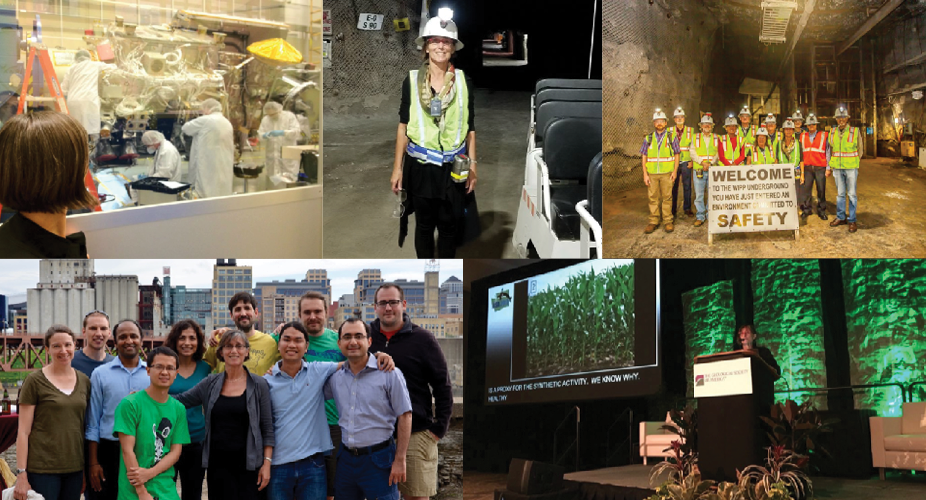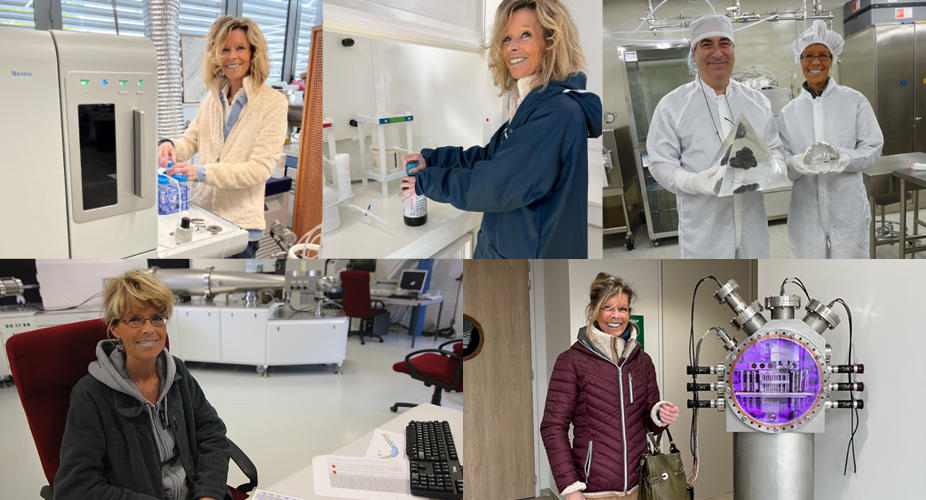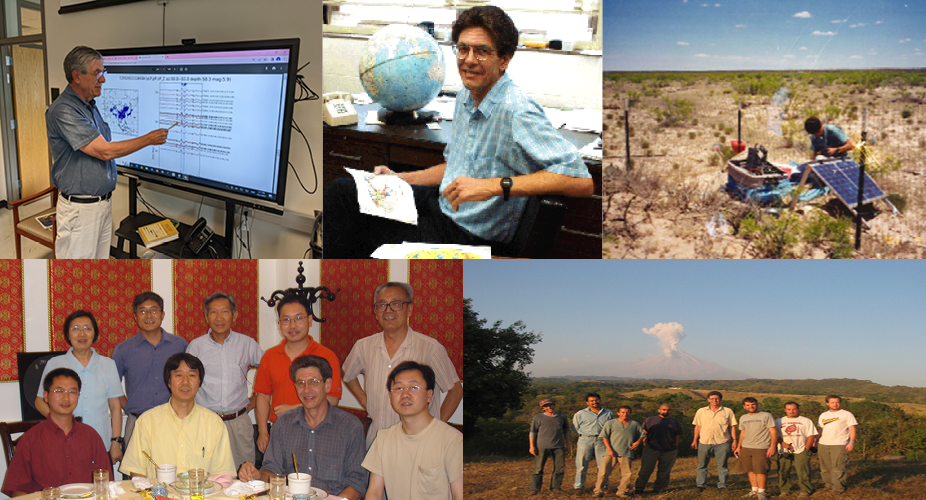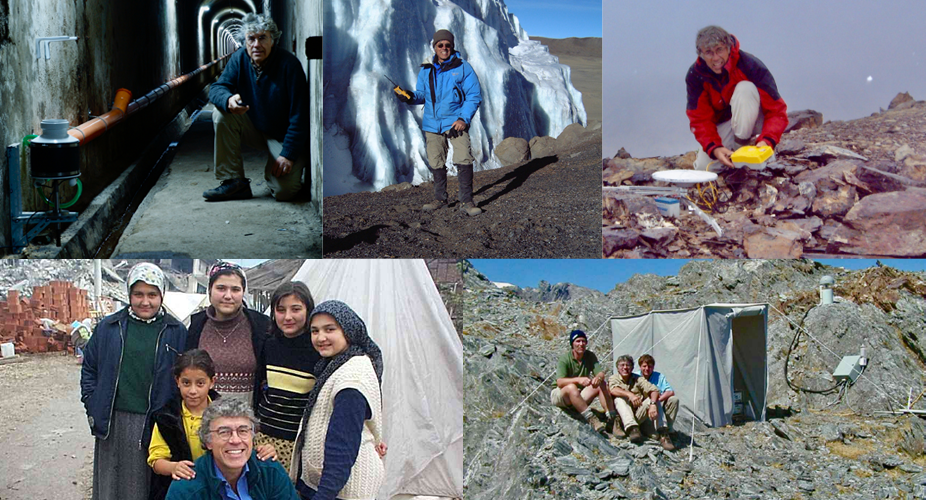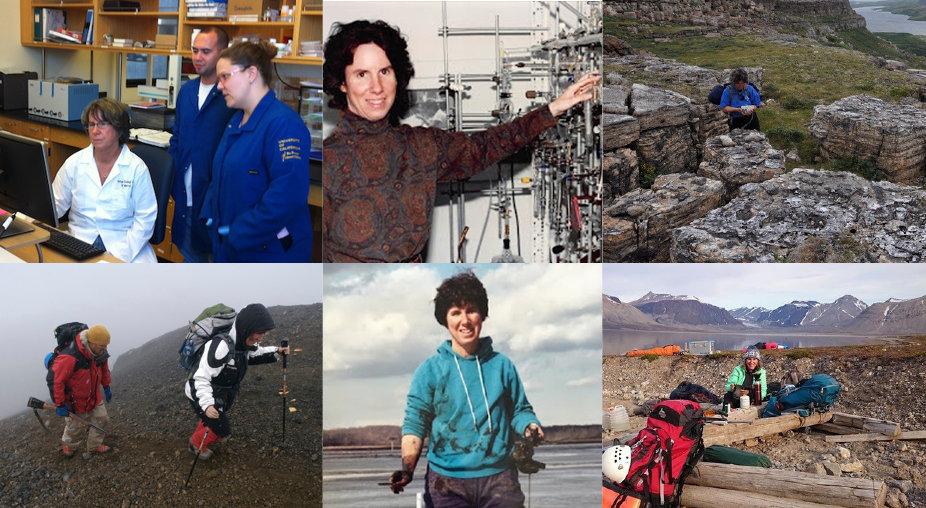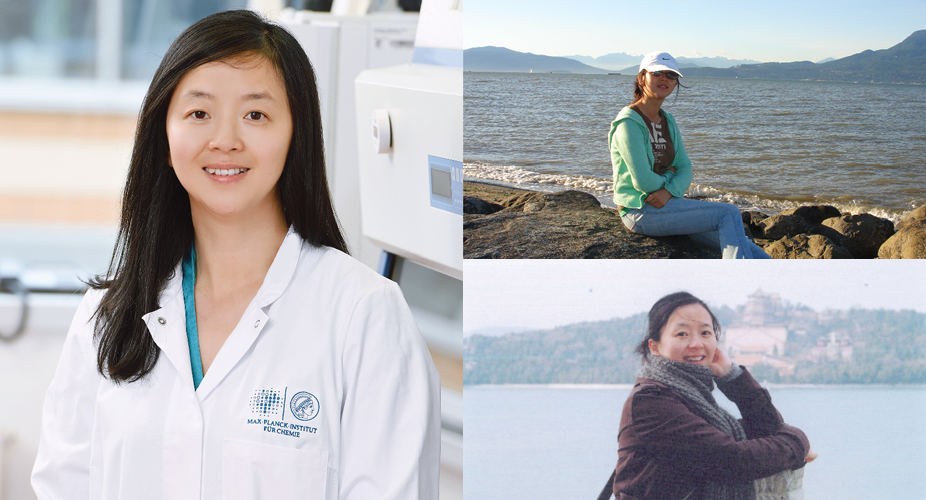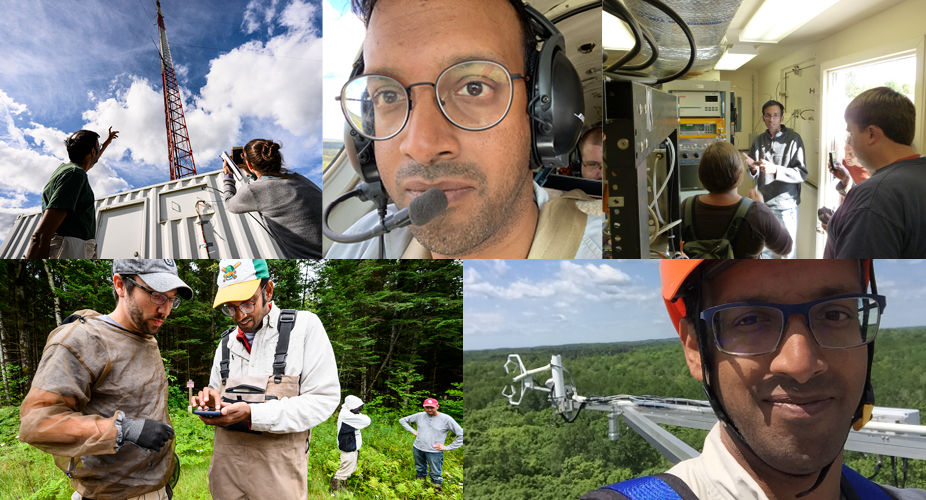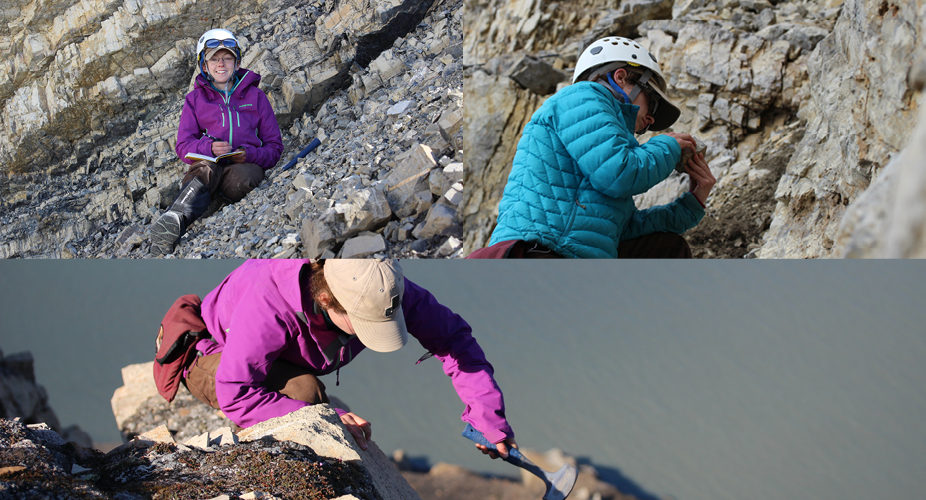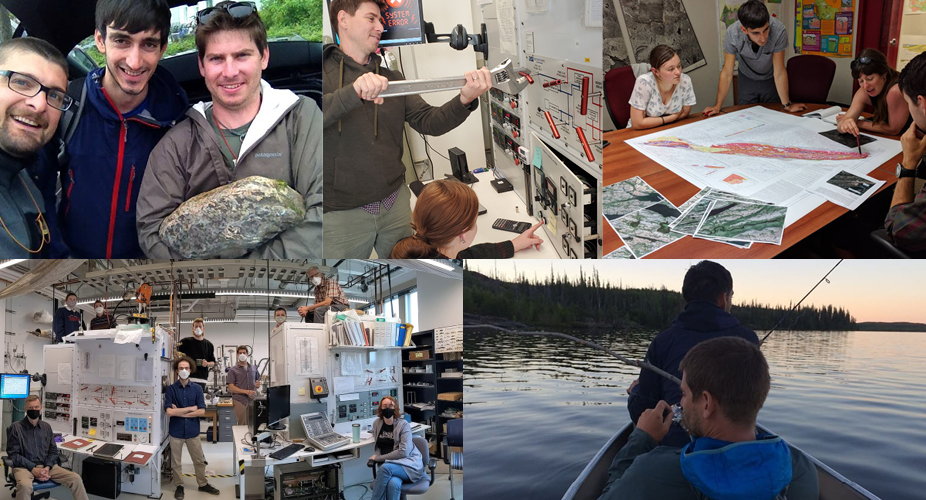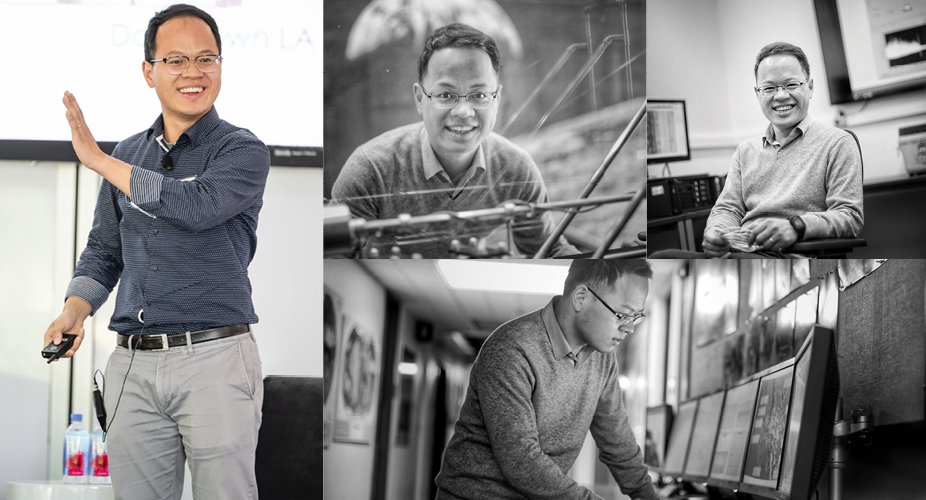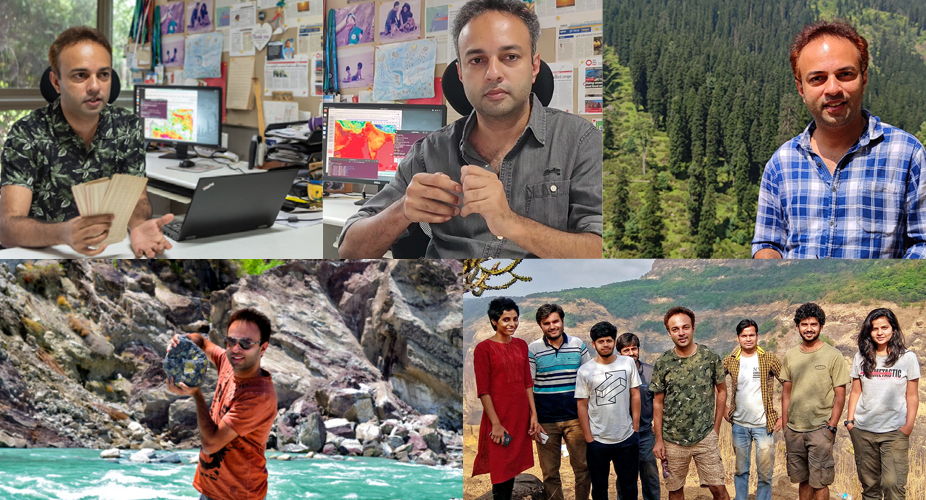Medalists
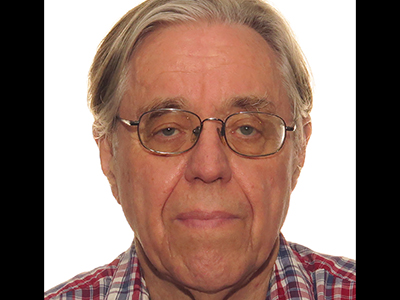
Citation
If the dawn of mission-based planetary science and development of plate tectonics mark the modern age of Earth and planetary sciences, David J. Stevenson, the Marvin L. Goldberger Professor of Planetary Science at the California Institute of Technology, is a giant of postmodern research. His extraordinary breadth and creativity are the defining qualities of his research. Moreover, he has a long-standing record of mentoring young scientists, organization of seminal meetings and leadership in national and international organizations.Professor Stevenson’s earliest work explored the miscibility of helium in hydrogen at high pressures and argued that gas giants contained zones of helium rainout. This was verified by probing of Jupiter during the Galileo mission and explains — via a stably stratified layer — the confoundingly axisymmetric magnetic field of Saturn. His recent, influential papers on interactions between zonal flows and magnetic fields in gas giants are essential to interpretations of gravity and magnetic data from the Juno and Cassini missions. Stevenson’s studies of the power source of various terrestrial dynamos have been equally impactful, including arguments that the early Martian dynamo was driven by now extinct plate tectonics, energy transfer from the Moon’s orbital state powered its early dynamo, and exsolution of magnesium oxide is an important source of energy for the geodynamo. Furthermore, as the Voyagers marched toward each giant planet, Stevenson followed with groundbreaking papers arguing that conduction within a salty, subsurface ocean of Europa explained the puzzling magnetic field structure of Jupiter; coupling between tidal heating and the thermal states of Io and Enceladus is manifest in periodic volcanism; and exsolution of gases drives cryovolcanism on Europa. The latter two insights were verified a quarter century after being proposed. Professor Stevenson’s contributions to Earth science are no less influential. He combined results from condensed matter physics, seismology, geochemistry, fluid dynamics and dynamo and thermal history modeling to construct the “standard model” for Earth’s core. Moreover, his theoretical work on melt transport in two-phase systems has influenced decades of work on the dynamics of magma oceans, and he has performed canonical research on coupled interactions between melt/fluid dynamics and geochemistry in the mantle wedge above subduction and on planetary rotation.
Professor Stevenson’s elegant explanations for enigmatic observations and prescient predictions will continue to guide Earth and planetary scientists in the coming decades. He is the essential choice for the Bowie Medal.
— Jerry X. Mitrovica
Harvard University
Cambridge, Massachusetts
Response
I thank my nominator, Jerry Mitrovica, for his kind, possibly exaggerated, comments on my scientific accomplishments, and I thank those who wrote supporting letters. I've been fortunate, I think, to live in a special time, the time of planetary exploration. We can look forward to further investigations and the exploding science of exoplanets, but it will never be the same. Geophysics has also changed, less dramatically perhaps, but expanding to embrace many aspects of our planet that we barely imagined a half century ago.
It is a great pleasure to receive the Bowie Medal from AGU, especially when one looks at the list of distinguished winners, many of whom I know or knew. The science I do is often solitary, but I wish to take the opportunity to thank three great influences: my thesis adviser, Ed Salpeter; my environment, the California Institute of Technology (Caltech); and my mission involvement, Juno.
First, my thesis adviser at Cornell. Ed Salpeter was one of the greats of theoretical physics and taught me the importance of order of magnitude and the need to understand physical process, not merely equations.
Second is Caltech and the colleagues, including students and postdocs, who I have encountered there. The opportunity to work with some outstanding students, too numerous to name, has been immensely important. Caltech is special, and I am thankful to have been associated for so long with that institution, even when it has, on occasion, dragged me into less interesting activities.
Third, I appreciate the special rewards of missions. For me this has been Juno, a spacecraft still in orbit about Jupiter and collecting novel information about the planet and its moons. Missions are time-consuming, and Juno is a team effort led by principal investigator Scott Bolton, but I've been fortunate to have participated for nearly a quarter century.
AGU has grown enormously from my first involvement in the 70s. It has been inclusive, and our science has become more team oriented. Deep learning and artificial intelligence (AI) are becoming prominent. But we must not lose sight of the importance of the individual scientist thinking novel ideas and thinking broadly. Outstanding individuals must be supported. It would be bad if the balance shifted too far toward AI and collectivism and a concern for inclusiveness. But I've lived in exciting times, especially in planetary science, so who am I to complain? Thank you.
— David J. Stevenson
California Institute of Technology
Pasadena, California
Field Photos
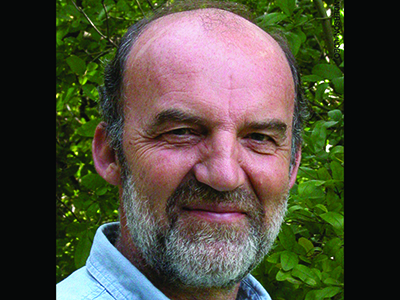
Citation
Dr. Dennis Kent has made many distinguished contributions to paleomagnetism that have had extensive and fundamental impact in the wider Earth sciences.Dr. Kent is a broad thinker who focuses on the bigger questions in his research field and beyond. A key finding that contributed to the establishment of the central paradigm of the Earth sciences — plate tectonics — is that marine magnetic anomalies provide a record in the seafloor of the sequence of polarity reversals of Earth’s magnetic field. With esteemed colleagues, Kent built on this foundation to develop a geomagnetic polarity timescale that provides a chronology for about the last 120 million years of Earth history. This foundational global geochronology has nearly universal utility and has underpinned our understanding of Earth and its history, particularly concerning the timing and rates of Earth processes. With other esteemed colleagues, Kent has effectively doubled the length of the geomagnetic polarity timescale by extending it beyond the timescale available from ocean crust using astronomical tuning of continental and marine sediments.
In addition to these “greatest hits,” Kent has made seminal contributions to understanding diverse issues, including how sediments record paleomagnetic signals, how Earth’s magnetic field behaves while it reverses polarity, how the magnetic signature of ocean crust records reversals and variations of intensity of Earth’s magnetic field, testing the foundational hypothesis of paleomagnetism (the geocentric axial dipole hypothesis), building a chronology of human evolution, correcting sedimentary paleomagnetic records to estimate paleolatitude more reliably, and unraveling puzzles involving global plate tectonics and ancient climatic change. All of these subjects are well-plowed ground, yet Kent has managed to make telling contributions to each with a substantial body of work that touches all aspects of the Earth sciences. In addition to these research contributions, Kent has been an exceptional mentor of younger scientists, many of whom have developed into outstanding researchers. He has also served as a leader of globally important professional organizations, including AGU, and research institutions.
Few individuals in geomagnetism, past or present, have made such substantial contributions to the advancement of geophysics. Dr. Dennis Kent is a giant of the Earth sciences and a richly deserving John Adam Fleming Medalist.
— Andrew P. Roberts
Australian National University
Canberra, Australia
Response
I thank Andrew Roberts for his generous remarks and the co-nominators for placing my candidacy in such a favorable light that it was accepted by the committee of AGU to bestow this significant honor in geomagnetism and paleomagnetism.
I want to take this opportunity to single out the person most responsible for putting me on the path to a career in science that has led to receiving this honor: my dearly departed mentor, colleague and friend Neil Opdyke. He hired me cold to work in the Paleomagnetics Lab at bucolic Lamont during my senior year at City College. He then somehow managed to get me into the graduate program at Columbia; the attractive offer reached me by telegram on Columbia’s R/V Vema just a month into what should have been a year cruise. I accepted, returned to Lamont, and have basically been here since. It was such a jarringly exciting time and place to be. Drifting continents and plate tectonics, geomagnetic polarity reversals recorded in magnetic anomalies and the magnetostratigraphy of deep-sea sediments, the pacing of Pleistocene ice ages were all ripe topics for exploration using paleomagnetism. Neil was the master; he always knew what was important and provided passionate support for pursuing answers with empirical data generated in his lab.
I met my wife, Carolyn, at Lamont, where we were part of a wonderful social and intellectual scene. Neil left me the lab when he departed for a tenured position at the University of Florida in 1980, and this presented me the challenge and ultimate deep satisfaction of mentoring a cadre of graduate students and brilliant postdocs and spinning up field projects with colleagues far and near. In the late 1990s, I joined the tenured faculty at nearby Rutgers University, where a singular pleasure was to teach a large undergraduate course called “Earth and Life Through Time.” The course was designed to satisfy a science requirement for nonscience majors, but it enabled me to expand my research horizons. I was also fortunate to supervise outstanding Ph.D. students, with whom I am still actively working.
Wish you were here, Neil, but I thank you in spirit along with Carolyn and family and friends and colleagues for all their support and the good ride that made it possible to arrive at this honor bestowed by AGU, the nonpareil geophysical organization I’ve been associated with for my entire career.
— Dennis Kent
Columbia University
New York, New York
Field Photos

Citation
Seth Stein is an extraordinary scientist who has made fundamental contributions to many geophysical disciplines. He has investigated processes within Earth’s lithosphere using techniques including seismology, space-based geodesy and marine geophysics. Seth and his students and colleagues have produced numerous seminal publications in the fields of seismic wave theory, Earth structure, normal mode seismology, plate kinematics, intraplate stresses and seismicity, oceanic microplates, plate boundary deformation, lithospheric heat flow and the structure of ocean plates, the causes of deep earthquakes, paleoplate reconstructions, the growth of the Andes, and seismic hazards. And this list is by no means complete.Seth continues to make major contributions, particularly addressing plate motions and how plate boundaries and plate interiors evolve, with special interest in the resulting earthquakes and hazards. A major focus of Seth’s current research is on better understanding multiple aspects of earthquake hazards, including how, where and when they occur and the shaking that results. Seth and colleagues are exploring how well the hazard maps, which are used to design earthquake-resistant structures and thus reduce losses from earthquakes, represent true seismic hazards, what causes the uncertainties involved and how to make better forecasts.
Another focus of Seth’s recent studies involves using seismic imaging methods to identify the processes by which continents rift apart to form new ocean basins, particularly the evolution of North America’s unique 1.1-billion-year-old Midcontinent Rift. Using a novel approach of comparative “riftology,” Seth is discovering how continental rifting starts, how it proceeds and why it ends. As an example, Seth incorporated EarthScope seismic modeling into the construction of a model that resembles the kind of rift initiation occurring in the East African Rift Valleys, solving a long-standing riddle as to why the Midcontinent Rift Zone rifting stopped so soon after it began. This project, as with several others such as the seminal work on modeling the thermal structure of oceanic lithosphere, was done with Seth’s leading collaborator (and also wife and life partner!), the accomplished geophysicist Carol Stein.
Seth is also an exemplary mentor, always making sure that students got first-author credit for their work done on big projects, and his enormous enthusiasm and great mentoring skills, combined with his exceptional seismology textbook, which (with its many early open-source preprint versions) has been a defining text for more than 40 years, have brought many students into the field of geophysics.
— Michael Wysession
Washington University in St. Louis
St. Louis, Missouri
Field Photos
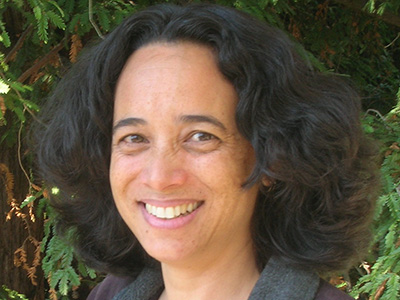
Citation
Christina Ravelo’s groundbreaking research on tropical climate variability and change, climate sensitivity, and ocean circulation and thermal structure spans several geological epochs extending from the Miocene and the Pliocene to the Last Glacial Maximum and the Holocene to the present. Her work covers many geographical regions as well — from the subarctic North Pacific to the tropical Indo-Pacific and, more recently, the Southern Ocean. Her contributions to our understanding of global climate change have been profound, innovative and influential, drawing critical links between the climate of the past and that of the future. Christina’s scientific discoveries inspired a generation of students, postdocs and other researchers to study the role of the tropics in the climate system.Christina’s work of the past two decades reinvigorated research on the Pliocene climate. With carbon dioxide concentration at today’s elevated levels, the Pliocene has been long considered a potential analogue to the future greenhouse warming climate. Christina’s and her collaborators’ discovery of a reduced east-west sea surface temperature (SST) gradient along the equator in the Pacific Ocean during the Pliocene epoch was a real game changer, as this gradient controls the atmospheric Walker circulation and has far-reaching effects on global climate. The state with the reduced east-west SST gradient was dubbed a permanent El Niño-like state or, as Christina named it, El Padre. This was a paradigm shift drawing attention to the tropical ocean as a potential driver of climate change on geological timescales. Christina’s latest work combining multiple temperature proxies from different tropical locations confirms her original ideas. Christina has also investigated changes in El Niño-Southern Oscillation (ENSO) through time. In a series of papers, using individual planktonic foraminifera, she has demonstrated that ENSO was weaker during the Pliocene, the Last Glacial Maximum and the early and mid-Holocene than at present, which raises the question of potential impacts of anthropogenic global warming on ENSO.
Christina’s scientific discoveries parallel her participation and innovative leadership in the International Ocean Discovery Program (IODP) and its predecessors (Ocean Drilling Program and International Ocean Drilling Program). The current IODP Science Plan (2013-2023) was shaped by her guidance and contributions. Her leadership ushered in a new era of IODP discoveries with mission-specific platform exploration that started in 2003 and continues today. The Ewing Medal is fitting recognition of her outstanding contribution to the field and her truly exceptional and inspiring leadership and influence on the science of paleoclimatology and climate change.
— Alexey Fedorov
Yale University
New Haven, Connecticut
Sorbonne University
Paris, France
Response
It is a wonderful honor to be this year’s recipient of the Ewing Medal. In receiving this award, I have been given the gift of an opportunity to reflect on my career and express my gratitude to those who have inspired and supported me. I do not take this support for granted. I am a woman of color, the daughter of immigrants, and have not always felt welcome in the scientific spaces that I occupy, code-switching to make it past gatekeepers to enter the worlds of science and academia that are ruled by unfamiliar cultural norms. I say this without bitterness or regret, but out of an obligation to speak my truth.
Heartfelt thanks to my inspirational colleagues who see me for who I am and have engaged me in scientific debate and discussion for years: Alexey Fedorov, who nominated me; Matt Huber, Maureen Raymo and Tim Herbert, who supported my nomination; Ivano Aeillo, Mitch Lyle, Yair Rosenthal and Delia Oppo, who are four of my most generous and insightful science comrades; and my University of California, Santa Cruz, family, who nurture and elevate me, including Jim Zachos, my departmental colleagues and my fellow equity warriors.
The most gratifying and important research I do is with my students, and I share this award with my 20+ graduate and 200+ undergraduate former and current students. Special thanks to Heather Ford, one of my amazing former students who worked behind the scenes to support this nomination.
My career was decidedly transformed by the Ocean Drilling Program (ODP), now the International Ocean Discovery Program (IODP). ODP/IODP is a truly community-driven program, responsible for much of what we know about past climate change, particularly of past warm periods. Serving on panels, working on proposals, participating in expeditions — these opportunities gave me leadership skills and a community of collaborators who have sparked some of my best ideas that have sustained me throughout my career.
I would not have earned this award without the unshakeable support of my family and friends. Thanks to my parents; my husband, Roberto; and our three kids, Ezequiel, Michaela and Gina. You continuously entertain and uplift me.
A final remark about my truth is about hope. My hope is that we dismantle biased structures and transform our culture to one that welcomes and amplifies the voices of those that have been marginalized. I thank AGU for their leadership in this transformation.
— Ana Christina Ravelo
University of California, Santa Cruz
Santa Cruz, California
Field Photos
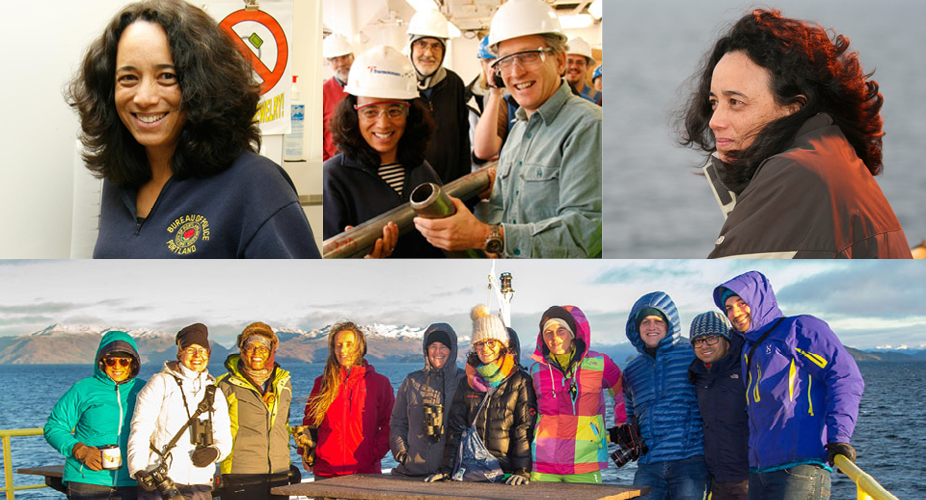
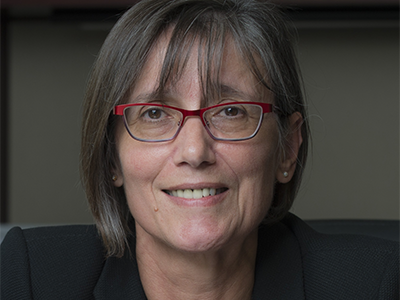
Citation
Professor Foufoula-Georgiou is a world-leader in theoretical hydrology, having shaped the field of multi-scale organization of hydrologic processes and dynamic evolution of landscapes. There is perhaps no more important scientific challenge in the hydrologic sciences than that of understanding and predicting precipitation - given its central role in human wellbeing now and into the future.
Efi was the first to develop rigorous multi-scale analysis formalisms via wavelets for quantifying the complex space-time structure of precipitation at a range of scales, develop downscaling schemes for hydrologic use at small watersheds, build quantitative metrics to assess numerical weather prediction models and enhance process understanding for convective parameterizations, and quantify model predictive ability in capturing extremes important for hydrologic applications.
Efi’s early work on braided rivers posed the question of whether slow large-scale river dynamics can be “learned” from smaller-scale faster processes, offering insight into the self-organization of these complex systems and tools for long-term prediction. Her extensive and sustained body of work on quantifying the topology and dynamics of delta channel networks via graph theory has provided the first rigorous mathematical account of those vulnerable systems challenged by sea level rise and human actions.
In addition to her impactful scientific contributions to hydrologic sciences, she has been one of the most influential leaders and a major force in the national and international arenas. As president of the Hydrology section of AGU (2014-2016), she set a stellar example of proactive and visionary leadership by establishing the first mid-career lecture award for the section (the Witherspoon lecture). She also set an example in honoring the legends of hydrology by developing the Virtual Hydrology Project, collecting and posting influential papers to inspire the next generation of young hydrologists.
Efi’s contributions to hydrologic sciences over her productive career have been innovative, creative and impactful, and she has been a major force in shaping the field as we know it today. Efi exemplifies the spirit of AGU’s Horton Medal, which is to honor those who have made “outstanding contributions to hydrology.”
— Soroosh Sorooshian
University of California, Irvine
Irvine, California
Response
Thank you, Soroosh, for the generous citation. I want to express my deep gratitude to Rafael Bras, Bill Dietrich and Andrea Rinaldo, who supported my nomination, and to all my colleagues, too many to mention here, who have influenced my career over the many years. It is hard to believe that 35 years have passed since I joined academia and met most of my academic friends, including you. The excitement of science keeps us young in spirit as we are fortunate to have our passion as our job. You introduced me as someone who has contributed to “theoretical hydrology,” and I want to pause a bit and amplify my passion for mathematically rigorous work. It probably goes back to my early training in Greece, where I was taught that “mathematics is the language of science,” and I often find myself thinking that “if I cannot see it in equations, I do not understand it.”
I have been privileged to work with excellent students and postdocs over the years and build ideas that I hope have made a difference. I started studying precipitation in the 80s with my Ph.D. thesis and moved from a few rain gauges, to a few ground radars, to millions of images now from multisatellite sensors that try to measure precipitation indirectly — a challenging inverse problem where our multiscale variability expertise and a systems approach to error modeling can make a difference in improving retrieval and assessing uncertainty.
I have been privileged to have spent most of my career at the St. Anthony Falls Laboratory at the University of Minnesota, where experiments were running 24-7, exposing me to the wonders of rivers and landscapes. Although I don’t consider myself an experimentalist, several of my students chose this path, and I gave them a blank check to follow their passion. Our work blended theory and experiments for understanding the multiscale variability of braided rivers, river morphodynamics, landscape evolution, and the topology and dynamics of delta river networks.
After 30 long Minnesota winters, that I credit with building character, moving to the University of California, Irvine, has been exciting, spurring new ideas on climate research and a new phase of my career.
I am lucky to have two wonderful children who have given me perspective and a husband of 40 years with whom I share the passion of science and scholarship. My students and postdocs have always been part of my extended family, and I dedicate this recognition to all of them.
— Efi Foufoula-Georgiou
University of California, Irvine
Irvine, California
Field Photos

Citation
Janne Blichert-Toft is a geochemist specializing in radiogenic isotopes and their applications to geochronology, planetary differentiation and, particularly, the evolution of the crust-mantle system of Earth. She is the acknowledged leader in geochemistry who advanced the measurement and application of the lutetium-hafnium (Lu-Hf) isotope system in geochemistry, cosmochemistry and planetary science and showed the enormous power of this isotope system to study the origin and evolution of planetary bodies, including Earth.Janne’s enthusiasm for research; her creativity to study geological processes recorded in rocks, minerals and fluids; and her energy and patience to advance analytical methods have made her a globally recognized expert in geochemistry and chemical geodynamics. Her main research approach includes the development and subsequent use of high-precision isotope measurements to reconstruct the origin of planetesimals and planets and, foremost, Earth’s evolution.
Janne has developed key techniques for high-precision isotopic measurements, in particular by plasma source mass spectrometry. After developing and improving this significant new tool, she immediately realized the exceptional suitability of the Lu-Hf isotope system to advance our understanding of the formation of planets and their subsequent evolution, particularly, its power for revealing the dynamic geochemical processes in the silicate Earth through time as expressed through plate tectonics. Current models for the evolution of the crust-mantle system are heavily based on her research. It is to her credit that Lu-Hf became the key isotope system now used routinely and dominantly as a tracer of crustal growth and recycling.
In addition to Hf isotopes, she has applied multiple radioisotope systems to geoscientific questions, particularly uranium-lead and samarium-neodymium. She used these systems for an enormous diversity of research topics, ranging from dating the formation of rocky bodies in the solar system to mineral growth in metamorphic rocks, formation of oil and the reconstruction of the paths of metals over human history. Many of her papers are seminal in the true sense of the word, as they initiated new research opportunities and directions and enormously influenced the path of geochemistry and cosmochemistry in the last two decades. These innovative and original scientific contributions made her an acknowledged authority in geochemistry who advanced the field significantly and made her one of the top-cited geochemists.
Based on her far-reaching and prolific, deep and broad scientific achievements and her service to the science community, she is undoubtedly a worthy and deserving recipient of the Harry H. Hess Medal.
— Klaus Mezger
Universität Bern
Bern, Switzerland
Response
Madam President of AGU Susan Lozier, Members and Fellows of AGU, Colleagues, Friends, Family, Ladies and Gentlemen.
Thank you, Klaus, for your kind and generous words, which touch me deeply.
It is with great pleasure and pride that I receive the 2022 Harry H. Hess Medal from the American Geophysical Union. I am deeply honored and moved and profoundly humbled to join the ranks of the impressive list of distinguished past recipients of this award, many of whom have been my scientific role models since I was a student and have influenced me greatly. I am overwhelmed by the decades of groundbreaking science that the Hess Medal recognizes and how, by way of this reward, I am now linked to the preeminent Harry Hess of plate tectonic revolution fame known to every geologist. Moreover, AGU was the first professional society I joined 35 years ago, while still an undergraduate student, and Fall AGU was the first international conference I attended and where I, in an utterly nervous state, gave my first oral presentation, so it is very special, symbolic and meaningful to me to be honored today by AGU, especially as a European woman.
I would like to thank AGU; the Hess Medal Committee members; my nominators; my employer, the CNRS (Centre National de la Recherche Scientifique), for daring what, at the time, seemed a great leap to hire me in France; my host institution, the École Normale Supérieure de Lyon, for having stood by me ever since; my second home, Rice University, for having adopted me into their Earth and planetary science family; my kind, generous, talented and brilliant students, who never cease to amaze, awe and inspire me by their achievements, creativity, intelligence and scientific rigor; our outstanding technical staff; and my wonderful colleagues and collaborators worldwide, many of whom have become close friends over the years. I would not be the scientist I am today without all of you. Lastly, I am forever grateful to my husband and my parents, without whose wisdom, integrity and boundless love and support I would not have made it this far intact because, as we all know, being successful in academia is a tough challenge at many levels, and not only for women…not anymore.
Thank you, Madam President, thank you, AGU, thank you all again so very much for this exquisite and unique honor!
— Janne Blichert-Toft
École Normale Supérieure de Lyon and CNRS
Lyon, France
Field Photos
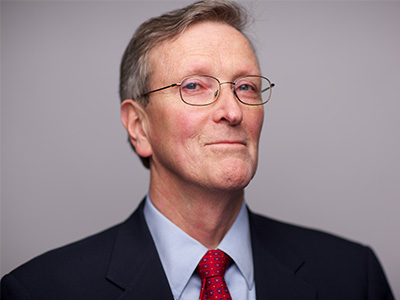
Citation
Dennis Hartmann has made outstanding contributions to climate science by innovatively employing his broad-based understanding of atmospheric physics and dynamics. Equally important is his contribution to the atmospheric science and climate community through his unselfish services.Of most direct relevance to this medal, given Roger Revelle’s contribution to the climate change field, are Dennis’s monumental works on cloud feedbacks, which are of central importance to estimates of climate sensitivity. For high clouds, Dennis’s so-called fixed anvil temperature hypothesis predicted that tropical convective anvil clouds would occur at about the same atmospheric temperature, regardless of the surface temperature. This hypothesis has been corroborated by many recent high-resolution modeling and observational studies and has provided major insight into how tropical convective anvil clouds would behave in a warming climate, with consequent positive longwave feedback. And for low clouds, with his graduate student Stephen Klein, Dennis discovered how the fractional areal coverage of stratocumulus clouds is controlled by the lower tropospheric stability. As a result of this work, the increase in this static stability anticipated in the response to carbon dioxide (CO2) increase has taken center stage in the discussion of feedbacks associated with stratocumulus clouds.
Dennis has also made seminal contributions to our understanding of the interactions of eddies with zonal flow and their role in climate variability. He and his students discovered that feedback between baroclinic eddies and the zonal flow is responsible for the large degree of low-frequency variability in jet structures and the zonal mean wind, the so-called annular modes of variability, which comprise north-south shifts in the jet streams and storm tracks. Dennis’s work has proven central to our understanding of the response of these preferred annular patterns to stratospheric ozone depletion and CO2 increase.
Dennis’s impact and leadership are not only through his many major original scientific contributions but also through his generous services to the climate science community. Dennis has chaired numerous important panels and committees. His unselfish service at local, national and international levels is exceptional. Dennis has also played an exemplary role in mentoring and inspiring the next generation of scientists. His highly successful book Global Physical Climatology, now in its second edition, has been an invaluable resource for students and researchers around the world with different disciplinary backgrounds, inspiring them to appreciate the truly interesting science involved in understanding the Earth’s climate and its possible future change, and has attracted them to become involved in that science.
Congratulations to Dennis for this well-deserved award!
— Qiang Fu
University of Washington
Seattle, Washington
Response
I would like to thank my excellent colleague Qiang Fu for nominating me for the Roger Revelle Medal and my colleagues Isaac Held, Brian Hoskins and Kevin Trenberth for their letters of support. This is a very great honor, and I am humbled to receive an award with such a distinguished list of prior Revelle Medal recipients. I would also like to thank my mentors during graduate school. Abraham Oort was a very generous adviser and a great example of using data cleverly to advance scientific understanding. Suki Manabe took an interest in my progress and suggested that I investigate the new data on the Southern Hemisphere stratosphere that was coming from the Selective Chopper Radiometer on Nimbus 5. This project allowed me to combine remote sensing, radiative transfer and atmospheric dynamics. Jerry Mahlman took an interest in me and modeled the excitement for science that sustains a happy career as a researcher. My postdoc advisers were Jacques Derome and Phil Merilees at McGill University and John Gille at the National Center for Atmospheric Research. I met other inspiring people at those places, too.
The Department of Atmospheric Sciences at the University of Washington was a great place for a developing young scientist, as it provided colleagues who were both encouraging and first-class examples of how to do science well. I remember many enjoyable mountain hikes with Mike Wallace, Jim Holton and Conway Leovy when I was a junior faculty member. I am now inspired by the wonderful new faculty who have joined the department.
I was fortunate to work on very interesting and important problems in the geosciences and benefited from talented and generous collaborators in science. Since my thesis was on the Southern Hemisphere stratosphere, I was well positioned when the ozone hole was discovered in 1985. Wave mean-flow theory developed greatly early in my career and provided many interesting insights. I was able to work with NASA scientists on several developments in remote sensing of the radiation budget and clouds.
Much credit for my success as a researcher goes to the excellent graduate students and postdocs with whom I had the opportunity to work during my time as a professor at the University of Washington.
My partner, Lorraine, has provided the love and support needed to combine a happy but intense career with a happy family life.
— Dennis L. Hartmann
University of Washington
Seattle, Washington
Field Photos
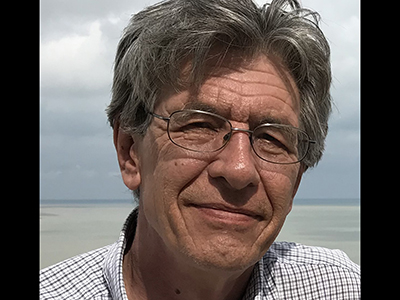
Citation
Few scientists’ work can honestly be claimed to have transformed the perception of how Earth works. If a picture is worth a thousand words, then it is true that Steve Grand’s tomographic images clearly resolving the subducted Farallon slab penetrating through the mid-mantle have transformed our understanding by demonstrating that Earth’s convective system necessarily involves the whole mantle.Steve, given his abundant modesty, would never ascribe to himself such an impact, but the vigorous debates that raged from the 1970s to the 1990s over layered versus whole-mantle convection were immediately put to rest with the 1994 publication, in the Journal of Geophysical Research, of his Atlantic-centered tomography that clearly revealed the Farallon slab at mid-mantle depths in both map and cross-sectional views. Of course, the iconic image that sealed the deal was the 1997 cover of GSA Today, “Global Seismic Tomography: A Snapshot of Convection in the Earth,” with Rob Van Der Hilst and S. Widiyantoro. To quote Dan McKenzie, “In my view he is the most wide ranging and careful observational seismologist now active.” In a fundamental sense, what characterizes Steve’s work throughout his career are two central components. First is the development and application of state-of-the-art tools to address first-order questions. Second is a remarkable ability to identify where to apply those tools to go after important problems that seismology can address using well-conceived and carefully executed analyses.
Whether it is the clear imaging of the Farallon slab in the deep mantle, resolving the global distribution of density anomalies driving mantle dynamics, revealing the deep root of the Yellowstone plume, or remarkably detailed images of the mantle beneath eastern Asia, Steve has been a central driving force in bringing each of these endeavors to fruition. Together these advances have demonstrated Steve’s profound (literally and figurately) impact on seismology, both in global and regional tomography, and the Earth sciences writ large. Steve Grand has made critically important contributions to the understanding of the structure, composition and dynamics of Earth's mantle. It is therefore entirely fitting and appropriate that Steve receive the 2022 Inge Lehmann Medal from AGU.
— David Rowley
University of Chicago
Chicago, Illinois
Response
Thank you, David, for your kind citation. I was surprised, humbled and honored to hear that I had received the Inge Lehman Medal and greatly appreciate the effort that you and other colleagues made to advance my nomination.
The list of previous Lehman Medal recipients is truly outstanding, but the first recipient, Don Helmberger, is especially noteworthy to me. Don was my adviser as a graduate student at the California Institute of Technology (Caltech). His unique approach to seismology was to assume every “wiggle” in a seismogram can be deterministically understood and modeled using synthetic seismograms, and that approach has guided me through my career. While at Caltech, we modeled seismograms sampling the upper mantle beneath North America that resulted in models still in use today, and the experience got me hooked on mantle seismic studies.
I was lucky to start my career at the advent of global seismic tomography. I naively thought that I could go through individual seismograms to develop my own 3D seismic model of Earth’s mantle, not realizing the amount of time that I would end up pursuing this. A high point, however, was at the 1996 Gordon Research Conference, where Rob van der Hilst and I compared our independently derived tomography models and found general agreement between them beneath North America. Seeing ancient deep mantle slabs for the first time was exhilarating.
Throughout my career I have been fortunate to have had excellent students, postdocs and colleagues whom I owe a lot to. I am particularly grateful to Alessandro Forte and Dave Rowley for a collaboration spanning 20 years. Alessandro convinced me to do joint inversions of seismic and geodynamic data that led to a deeper understanding of mantle dynamics as well as the geologic manifestation of deep mantle processes. I also need to thank Fenglin Niu and Jim Ni for guiding me in a number of field projects. The projects were productive but also a lot of fun.
Over my career, our knowledge of Earth’s deep mantle has gone from a bland, uniform volume of remote rock to one populated by slabs and plumes as well as previously unimagined LLSVPs (large low shear velocity provinces), ULVZs (ultralow velocity zones) and deep mantle scatterers. It’s been a pleasure and honor to have been a part of that voyage of discovery. Though the advances have been remarkable, there is still much we don’t understand about the deep Earth, but I am confident many new discoveries are on the horizon.
— Stephen Grand
University of Texas at Austin
Austin, Texas
Field Photos
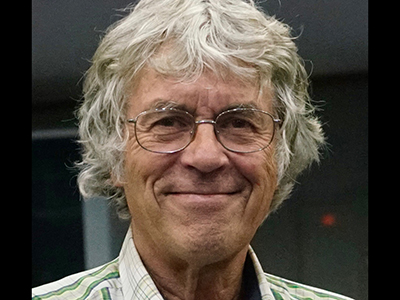
Citation
Earth science is a data-driven field, and Roger Bilham has brought tremendous energy and creativity to the measurement of data to quantify crustal deformation. For decades Roger has led projects to collect geophysical data in far-flung corners of the world, from Ethiopia to Tibet to Venezuela, to name just a few. He capitalized on space-based geodesy technologies as they became available, spearheading the creation of UNAVCO. He additionally left no stone unturned in a quest to collect data to attack key problems in seismotectonics and seismic hazard, from ferreting out traditional surveying data in dusty reports to designing new instrumentation to measure fault creep and fault zone gas emissions. He designs, installs and maintains creepmeters in California and elsewhere, occasionally lamenting the lack of shoveling talents among younger generations.In his international work Roger has worked tirelessly and creatively to support local partners, attacking work that was beyond the capacity of local resources. These projects involved strong, organic elements of capacity development and inclusion: training for international students and geoscience professionals around the world, as well as students in the United States.
Roger’s papers have contributed to the understanding of deformation and seismic hazard on the Indian subcontinent, both of which hinge on an improved understanding of the complex collision between the India and Asia plates. Among a long list of contributions, he brought GPS measurements to bear on a debate regarding the role of the Altyn Tagh fault in absorbing Indo-Asian convergence. In his work on seismic hazard, he created one of the most “borrowed” figures I have seen, depicting the earthquake potential along the Himalayan Arc.
The broader impacts of Roger’s contributions go beyond consideration of seismic hazard. Roger took science communication to new heights, starring in successful IMAX movies on Everest and Kilimanjaro. These and other documentaries have brought basic geoscience education to audiences in the millions. Roger’s passion for science is infectious, coming across equally clearly on an IMAX screen as in a classroom setting. Among the ranks of today’s geoscientists are some who declared majors after taking Roger’s introductory undergraduate class.
Charles A. Whitten was described as “a man of many talents, a superb all-round geodesist,” “a strong advocate for using geodetic surveys to measure crustal motion.” With his breadth and depth of contributions over a career spanning a half century, Roger Bilham is a Whitten Medalist in the very best tradition of this award.
— Susan E. Hough
U.S. Geological Survey
Pasadena, California
Response
Many thanks, AGU, for honoring me with the Whitten Medal. Good heavens!
Coincidentally, it was Whitten’s diversity of geodetic investigations that has been the inspiration for most of what I have meddled with in the past half century.
My jump-start was being exposed to the humor and electric intellect of Geof King building a laser strainmeter in Cambridge. This was all soldering irons and milling machines.
Then one day in 1970 (around 11:27 a.m.), Dan McKenzie and Teddy Bullard and a bunch of us (student riffraff) were discussing ways to quantify continental collision directly. “Surely the Great Trigonometrical Survey of India must have recorded convergence in the Himalaya,” said Teddy. “Anyone willing to go and take a look? Bilham, you don't seem to be doing anything useful.” I was now launched into mainline geodesy. This was all sines, cosines and spherical excess.
A few months later (at 4:14 p.m.) Nick Ambraseys gave us a talk in which he uttered the now famous phrase “Earthquake don't kill people, buildings do.” This opened a completely new (and surprisingly useful) scientific window — the effects of earthquakes (and corruption) on people and the numerical investigation of ancient earthquakes. This was all dusty archives and strange languages, blended with brittle steel and weak cement.
In Cambridge too I first met Vinod Gaur, who has been a colleague and guide to everything in India since then. This was all tandoori chicken and high-integrity wisdom.
My exciting decade at Lamont-Doherty was surrounded by extraordinarily gifted scientists: Scholz, Sykes, Richards, Jacob and Seeber, to name a few. Thanks for all your wonderful insight and encouragement! This was all “let’s-measure-anything-that-moves,” with tide gauges, tiltmeters and creepmeters.
And then, suddenly, there was GPS. In 1986 (at about 09:31 a.m.) we formed UNAVCO, which brought me to Boulder, where I was joined by a wonderfully gifted group of graduate students and my colleague Peter Molnar — thank you guys, you deserve this medal, not I! This was all writing proposals and answering the phone.
Within the next few decades, we had measured the convergence of the Himalaya, the height of Mount Everest, plate spreading in Iceland and Ethiopia, the eastward velocity of the Caribbean, and slip rates on the Bocono, Altyn-Tagh, Chaman, and San Andreas faults. Holy cow! This was all frequent-flier miles.
Not least I thank Sue Hough and those kind colleagues who persuaded the Whitten committee to look me over. Thank you, all, so much!
— Roger Bilham
University of Colorado Boulder
Boulder, Colorado
Field Photos
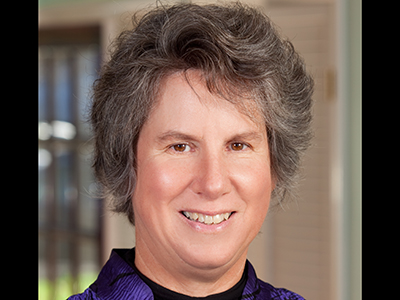
Citation
Marilyn Fogel’s groundbreaking career spurred the opening of entirely new research areas in the biogeosciences, advancing knowledge at the Earth-life interface and inspiring a generation of geoscientists. During a career spanning more than 40 years, she drove the integration of isotope geochemistry with a variety of topics in the environmental and life sciences, ranging from paleoecology to the search for life on other worlds to questions in human evolution. She began this work at the Carnegie Institution during an era in which the word “biogeosciences” was seldom used and in which women were a rarity in geoscience.Marilyn was undaunted. The hallmark of her research was a holistic approach in which she established and advanced novel analytical methods; used them to make fundamental, foundational observations; and applied these innovations in impactful ways through numerous collaborations. Following this approach, Marilyn was the first to characterize many isotope fractionations for key biomolecules and critical biochemical processes. She pioneered the pursuit of palaeoecological and anthropological questions using isotope analyses. She was among the first to analyze isotopes in proteins and amino acids, ushering in new insights into nitrogen cycling in soils, sediments and aqueous systems. She took these and other insights into the field of astrobiology when it was still new.
Over the years, Marilyn generously mentored students and postdocs who grew into a vast network of exceptional scientists; the number of stable isotope laboratories established and led by her former mentees is a remarkable legacy, the impact of which will be felt for decades to come. Her scope of influence grew as she stepped up into visible and creative leadership roles at the National Science Foundation and AGU; at the University of California (UC), Merced, where she was a founding department chair; and then as founding director of a new biogeosciences institute at UC Riverside. To all these roles she brought keen scientific insight, deeply humane ethics, an infectiously optimistic personality and a service-oriented leadership style. Marilyn thereby became a beloved citizen-leader of the biogeoscience community, inspiring countless scientists working at the Earth-life interface. She continued to inspire to the very end, through her astonishing example of leading and engaging while living with amyotrophic lateral sclerosis (ALS, or Lou Gehrig’s disease). An extraordinary person who made extraordinary contributions at the intersection of Earth and life sciences, Marilyn Fogel is the perfect recipient of the inaugural Eunice Newton Foote Medal for Earth-Life Science.
— Ariel D. Anbar
Arizona State University
Tempe, Arizona
Field Photos
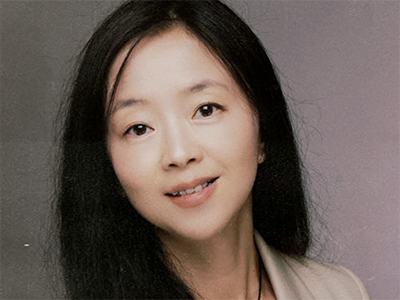
Citation
Yafang Cheng’s scientific research has made several breakthroughs and transformative advances in the mechanistic understanding of atmospheric processes, especially on atmospheric aerosols and their effects on air quality, health and climate. She discovered novel mechanisms and developed new theories of reactive nitrogen chemistry that reshaped the scientific understanding of haze formation and nitrogen cycling. Her work revealed how the extreme haze events in northern China can be explained by multiphase oxidation reactions in aerosol water and developed a multiphase buffer theory to explain atmospheric aerosol acidity and the sustainability and high effectiveness of multiphase oxidation.Cheng and her group have developed new instruments and techniques to probe physical and chemical properties of aerosol nanoparticles. With these advanced techniques and in-depth molecular dynamics simulations, she was the first to reveal that particle size can strongly alter the characteristic concentration of phase separation in mixed systems, resembling the influence of temperature. Cheng’s research on aerosol climate impact is also dealing with black carbon (BC) as one of the most important short-lived climate warming agents. To obtain a global climatology of BC aerosols, she initiated and continues to lead the CARIBIC-SP2 (Civil Aircraft for the Regular Investigation of the Atmosphere Based on an Instrument Container–Single Particle Soot Photometer) and Eugen Seibold-SP2 projects, where she measures BC aerosol concentration and mixing state on board a Lufthansa passenger aircraft and a sailing yacht for ocean research. In this way, she has collected the largest ever BC measurement data set from over 1,000 flight hours at high-altitude and about 2,000 sailing hours in remote marine environments, where data are particularly important for evaluating the climate effects of BC aerosols. Her systematic investigations provide unique insights and demonstrate the importance of the radiative effects of light-absorbing aerosols and wildfire emissions on cloud formation and regional climate in the Amazon, Southeast Asia and the Arctic.
Cheng has successfully demonstrated how a better physicochemical understanding of Earth system processes enables the development and implementation of effective strategies to protect human health and mitigate air pollution and climate change in the Anthropocene. Moreover, she was able to improve the scientific understanding of SARS-CoV-2 aerosol transmission and to quantify the effectiveness of masks and other protective measures with key policy implications in combatting the COVID-19 pandemic.
Yafang Cheng has also demonstrated exceptional leadership and provided outstanding service to science and society. Her honors include the Science Breakthrough Award in Physical Sciences of the Falling Walls Foundation (2021) and the Schmauss Award of the German Association for Aerosol Research (2020).
— Jos Lelieveld
The Max Planck Institute for Chemistry
Mainz, Germany
— Renyi Zhang
Texas A&M University
College Station, Texas
Response
Thank you, Renyi and Jos, for the nomination, your very kind citation and great support. Many thanks to AGU and the award committee. I am deeply honored and grateful to receive this medal, in memory of a woman who has greatly advanced atmospheric sciences and who is still inspiring and encouraging our community today.
I want to acknowledge so many people that got me here. Max Planck Institute for Chemistry, everybody at MPIC, you are the reason I love to stay in Mainz. Uli Poschl, Andi Andreae, the relationship of trust and friendship over these many years are priceless. University of Iowa and Leibniz Institute, Greg Carmichael, Ali Wiedensohler, Jost Heintzenberg, I still remember the scene when we first met. Peking University, my mentor Yuanhang Zhang, and the lake and tower on the beautiful campus. There are too many names that I should mention, but allow me to single out a few. Susan Trumbore, Markku Kulmala, Katharina Kohse-Höinghaus, Doug Worsnorp, Andreas Wahner, Sjaak Slanina, I deeply appreciate your support. Paul Crutzen, Kurt Binder, truly an honor to work with you. Your dignity and integrity in research and in educating young generations will always encourage me to face challenges and difficult moments. Thank you!
I also want to give special thanks to all my former and current group members. You are amazing. I wouldn’t be here without our joint adventures on the airplane, over the ocean, in the rainforest and in the virtual digital Earth. In particular, Guangjie, Nan, Zhibin, Siwen, Meng, Qing, Guo, Ruijing, Chaoqun and many more, your enthusiasm and strong dedication also motivate me and the whole team.
I would also like to thank my parents and my husband; none of this would be possible without you, and to my son, I love you dearly, and you have already started to inspire me.
This is a world that we are collectively feeling and experiencing. To face the grand challenge of climate change and air pollution, a global effort is needed. This is our time, our responsibility and our chance to work together and make a difference. Thank you!
— Yafang Cheng
Minerva Independent Research Group, Max Planck Institute for Chemistry
Mainz, Germany
Field Photos
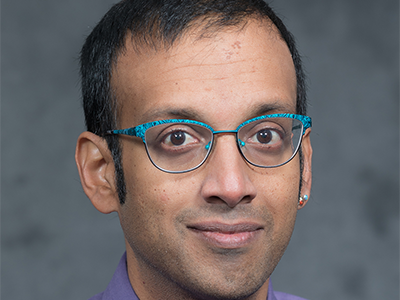
Citation
It is a fitting accolade that Professor Ankur Desai’s career is now honored with the name of Joanne Simpson. Like Simpson, Desai’s career to date has included transformative scientific advances across multiple areas of inquiry, leadership in field projects, combined use of observations and models to advance understanding, and service and outreach in support of our scientific community. And Desai’s unfailing commitment to building a more fair and equitable environment for all members of our community is most certainly inspired by Dr. Simpson’s trailblazing efforts to do the same for women in our field.Professor Ankur Desai’s research includes transformative scientific advances in broad areas of biogeosciences, atmospheric sciences and global environmental change. His research contributions span the science of micrometeorology and eddy covariance flux measurement, observational studies of Earth’s carbon and water cycles, and combining observations and models to characterize how land-atmosphere feedbacks evolve along spatiotemporal scales. Desai’s key insight in understanding terrestrial carbon and water cycles is recognizing that carbon fluxes cannot be viewed in isolation of any one ecosystem, but rather through scaling and synthesis across these. He has used the upper Midwest as proving ground for many of his theories and conceived (including the acronym) and funded the largest project on scaling of land-atmosphere interactions over tall vegetation since BOREAS (Boreal Ecosystem-Atmosphere Study) in the late 1990s. CHEESEHEAD (the Chequamegon Heterogeneous Ecosystem Energy-balance Study Enabled by a High-density Extensive Array of Detectors) arose out of the discoveries made in Desai’s lab on a potential breakthrough in solving the riddle of lack of energy balance closure in eddy covariance, which he had tied fundamentally to issues of scale.
Professor Desai’s contributions to our field extend well beyond the realm of research. At the University of Wisconsin-Madison he is widely regarded for his outstanding mentoring and teaching, his leadership in the Atmospheric and Oceanic Sciences Department, and his leadership in advancing an equitable and inclusive environment. And he gives tirelessly to our scientific fields through his editor duties and leadership in national and international communities.
So many of us who have had an opportunity to work alongside Professor Ankur Desai consider him a friend and colleague. For that, we are thrilled that he is being awarded the Joanne Simpson Medal for Mid-Career Scientists!
— Daniel J. Vimont
University of Wisconsin-Madison
Madison, Wisconsin
— Stephen Carpenter
University of Wisconsin-Madison
Madison, Wisconsin
— John Kutzbach (deceased)
University of Wisconsin-Madison
Madison, Wisconsin
Response
To my nominators, thank you, thank you and thank you! John Kutzbach is one of the kindest scientists I have known, a true mensch. His routine uplifting of my work often provided the shot in the arm I needed to keep plowing ahead, even when the research stalled, the funding spigot dried, or barriers felt insurmountable. Likewise for both Steve Carpenter and Dan Vimont, who then carried on that spirit to renominate me after John’s passing.
I promise I will not let this get to my head! There are already enough egos in our science, some that deserve chastising. For sure, I’ve adopted a culture of showmanship. It’s what we do to be heard and showcase the work from our labs, especially when you are not of the majority and operate from a marginalized mindset of working twice as hard for half the credit.
But, for me, the more important trait is “show-up-ship.” Show up when students pitch new ideas and need help finding resources. Show up when collaborators want to form teams to tackle ideas. Show up when people want to work with your data and code and share it freely. Show up when communities and groups ask to learn about what your research means for them. Show up when journals and funding agencies and departments need you to put in the work. Show up when your friends and family need support. That’s pretty much it!
For two decades, our Ecometeorology Lab has made careful measurements and models of the biosphere and its relationship to the atmosphere to make better sense, better decisions and better predictions of the Earth system. Our best findings were rarely “eureka!” moments. It was never a straight path following some preordained scientific method and certainly never by any one person on their own. Rather, the more beloved utterance in science I find is “whoa, that’s cool” or “huh, that’s weird,” often when huddled in groups or teams over a puzzling figure. More often, this is done when the groups are diverse, open to new ideas, and in a place safe for making new connections. I’m fortunate and privileged to have been part of many moments like this. I will rally so that everyone else can too, especially for those with the least opportunity.
If you’re reading this — go and nominate someone you admire for an award or do something else kind for them. Show up!
— Ankur R. Desai
University of Wisconsin-Madison
Madison, Wisconsin
Field Photos
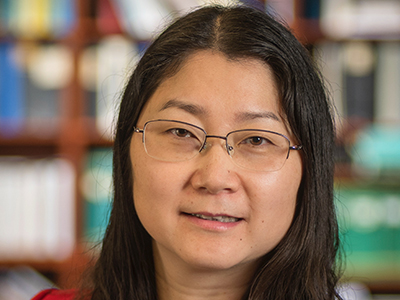
Citation
Space physics is of increasing importance since space storms strongly affect our daily dependence on advanced technology. Yue’s emphasis is on ionosphere/thermosphere (I/T) structure and dynamic variability under the variety of solar, solar wind and magnetosphere conditions. She has opened a new research frontier, discovering critically important processes and the significance of multiscale structures in the I/T and is playing important leadership roles in research and space weather prediction.
Yue spearheaded inclusion of nonhydrostatic processes in global general circulation models of the I/T. These processes had typically been ignored (minor impact assumed) but are critical for rapidly varying dynamics. Yue found they are especially important on meso-spatial scales and after sudden changes in forcing, vastly improving space weather forecasting. Yue also found that nonhydrostatic processes strongly affect acoustic-gravity wave propagation and neutral density in the I/T, thus substantially influencing satellite orbits.
Yue’s most recent research and leadership have led to a major paradigm shift: mesoscale processes are now viewed as controlling much of I/T system dynamics and its ultimate larger-scale configurations, unlike previous understanding based on large-scale and statistically derived driving for different conditions. Yue also greatly improved modeling, allowing spatially variable and subdegree grid spacing that strongly improved the capability to understand multiscale dynamics, including dynamics triggered by geographic events such as hurricanes and volcanoes.
Yue’s leadership includes our Multi-University Research Initiative team (one of two women principal investigators of 21 Department of Defense 2016 selected teams). Under her leadership, this eight-institute group focused attention on mesoscale structures, contributing to the major paradigm shift mentioned above. Furthermore, Yue was selected for the interdisciplinary leadership team that is planning the NASA Geospace Dynamics Constellation mission to study coupling between the magnetosphere and the I/T system, and she has been selected for the prestigious National Academy of Sciences Committee on Solar and Space Physics to support scientific progress in solar and space physics and assist the government in planning programs for these fields.
As the first, and still only, female full professor in the Physics Department of the University of Texas at Arlington (a Hispanic-Serving Institution), Yue leads emphasis on diversity, equity and inclusion. Her advocacy helped to increase the presence of underrepresented segments of society, including initiating the student Women in Physics organization. Based on these successful and visible activities, Yue was selected as a “featured individual” for a public libraries’ exhibit of Women in Science to encourage women and girls to join the science, technology, engineering and mathematics (STEM) field.
— Larry Lyons
University of California, Los Angeles
Los Angeles, California
Response
I am deeply honored to receive the Joanne Simpson Medal. I thank AGU for their dedication to space and Earth sciences and Joanne Simpson for her numerous efforts to enhance the diversity of our community. I would like to express my sincere gratitude to Larry Lyons for nominating me and to Arthur Richmond, Gang Lu and Roderick Heelis for their support to my nomination. They are distinguished leaders in our field whom I have the honor to work with and who have been so supportive to my career.
I am sincerely grateful for many fantastic people in my life who inspired me and supported me. It has been a great honor to me to work with amazing professors and colleagues from different universities and centers, including Peking University, University of Michigan, National Center for Atmospheric Research, NOAA Space Weather Prediction Center, and University of Texas at Arlington. I deeply appreciate their encouragement and endorsement, which helped me to pursue my dream and drove me to think out of the box. Some of the most valuable advice I got is “not just think about what you CAN do, but what you NEED to do for the community,” which continuously motivates me through my career. I am truly thankful for all the talented students, postdocs and research scientists with whom I have enjoyed so much working as a team.
I am greatly indebted to my friends and family, who have supported me without reservation, particularly my parents, my husband and two lovely kids. I thank my parents for seeding the idea of “girls can do STEM” in my mind when I was little and my husband for having my back all along. Finally, the love of my two sweet kids gives me tremendous strength to make continuous contributions to the community and society.
— Yue Deng
University of Texas at Arlington
Arlington, Texas
Field Photos
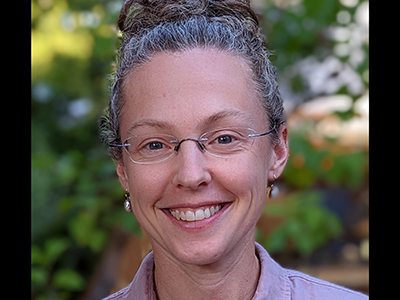
Citation
Jessica “JC” Creveling’s work reflects the power of interdisciplinary research practiced through a triptych of geology, geophysics and geochemistry. She has fundamentally deepened our understanding of critical events in Earth history through a creative combination of meticulous fieldwork, computational modeling and laboratory measurements. Moreover, JC is recognized as a gifted teacher and patient mentor, building a more inclusive community by attracting underrepresented minorities and first-generation and disadvantaged college students into geoscience research.As an undergraduate at Colorado College, JC learned that elucidating processes in sedimentary geology requires facies-level interrogation of strata, and this ignited her interest in sedimentary sequences. Her Ph.D. at Harvard combined fieldwork in Australia with geochemistry to explore environmental conditions that led to dramatic phosphate preservation across the Ediacaran to Cambrian transition. Moreover, she jumped into geophysical modeling by exploring conditions on Earth’s shape necessary to drive rapid, high-amplitude oscillations in Earth’s rotation pole inferred for the Neoproterozoic. JC’s interest in the Neoproterozoic continued at the California Institute of Technology, where her field-based investigation of the Noonday cap carbonate in Death Valley uncovered significantly more complex sea level histories than expected from eustasy. She also began intense study of sea level physics to complement this work. JC’s epiphany was to realize that physical processes that drive geographic variability in sea level during the Pleistocene ice age would be active in ancient events, where eustasy has been the prevailing assumption, and she is the first to bring the full machinery of sea level physics to bear on deep time glacial events.
A series of seminal papers followed, including modeling studies of the “sea level fingerprint” of snowball Earth deglaciation and Late Ordovician glaciation that reconciled enigmatic field data; comparison of coral records and modeling results to constrain sea level high stands during marine isotope stages 5a and 5c; reanalysis of karstification-driven uplift of scarps along the Atlantic coastal plain that revised the age of the features; and a study, with graduate student Meghan King, of the unique imprint of ice age dynamics on stratigraphy along the U.S. west coast during the last glacial cycle. These studies have motivated a reassessment of correlation methods used in sequence stratigraphy and significantly expanded our understanding of the complex connection between local and global mean sea level.
— Jerry X. Mitrovica
Harvard University
Cambridge, Massachusetts
Response
Thank you, Jerry Mitrovica, for your generous remarks and Maureen Raymo, David Evans, Victoria Orphan, the James B. Macelwane Medal Committee, and the Union for the honor and the opportunity to publicly convey gratitude to many generous mentors.
It’s not lost on me that the good fortune to receive such an award emerges from the greater fortune of the company that I keep. Sam Bowring mentored me to become a geoscientist deeply familiar with the questions and methods of a secondary discipline, and his words direct my career. I thank Paul Myrow, Andy Knoll, John Grotzinger and Sam for laying my geological bedrock. I thank Jerry Mitrovica and Daniel Muhs for orienting me toward the confluence of stratigraphy and geophysics. And I thank Mike Gurnis for asking me a few questions—that he likely won’t remember—that really made me think. Without geophysical collaborators Carling Hay, Jacky Austermann, Tamara Pico and Harriet Lau, my world would be much narrower and much less quantitative. Thank you all. I am indebted to Oregon State graduate students Meghan King, Schmitty Thompson, Cedric Hagen, Paige Reynolds and Harvard student Linda Pan for propelling our research forward.
I thank my Oregon State colleagues for innumerable generosities, especially Andrew Meigs, Ed Brook and Peter Clark; I thank my dean, Tuba Özkan-Haller, for saying yes even when I say no; I thank my National Science Foundation program officers for taking a chance on me and my college’s exceptional administrative staff for keeping me solvent. Most importantly, I thank my dad, Brad, for reviewing the entirety of my high school physics homeworks; my mother, Linda, for sharing the joys of creative writing and staunch organization; and I thank Frank Sousa, undoubtedly the better geologist in our union, for making each day together bright.
— Jessica Creveling
Oregon State University
Corvallis, Oregon
Field Photos
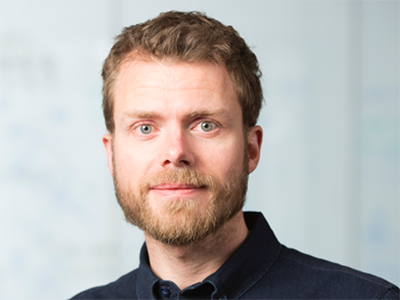
Citation
We are honored to introduce Professor Pierre Gentine, who received the 2022 AGU James B. Macelwane Medal for his fundamental research on land-atmosphere interactions and pioneering contributions to integrating machine learning concepts into climate modeling.Professor Gentine’s group is known for groundbreaking advances in integrating machine learning methods with physical models/processes to advance our understanding of the Earth system. He introduced frameworks for using deep learning to improve cloud-resolving simulations for climate modeling. His group led the development of the Cloud Brain (CBRAIN), a novel deep learning framework for skillful prediction of convection in climate models. With these contributions, he transformed the dominating top-down thinking (and simulation strategy) by opening a unique avenue for a future class of convection parameterizations in climate models. Within a short period of time from these pioneering publications, many other artificial intelligence-based methods were developed by others. Arguably, Professor Gentine’s innovative work on this topic spurred a new wave of research in using deep learning for climate science. He has successfully established the National Science Foundation Science and Technology Center (STC) Learning the Earth with Artificial Intelligence and Physics (LEAP) to further advance this field.
While most scientists focus, at least in the early parts of their career, on one field of study, Professor Gentine has progressed on several different fronts. His group developed a new theory for surface layer turbulence, discovered the key role of cloud albedo feedback and of the morning fog layer in determining the diurnal course of surface heat fluxes in the tropics, and revealed the power of satellite observations to provide new insights into water stress on global plant physiological response. Further, Professor Gentine’s group has shed light on the magnitude of the effect of soil moisture variability on the long-term carbon sink and the mechanisms responsible for associated carbon losses. They showed that soil moisture variability and trends induce large carbon dioxide sources on the order of the land carbon sink itself.
In summary, Professor Gentine is an exceptional scientist and a dedicated mentor who has achieved an international standing through groundbreaking and high-impact contributions. We are thrilled that he was selected as one of the recipients of the 2022 James B. Macelwane Medal. Congratulations, Pierre!
— Amir AghaKouchak
University of California, Irvine
Irvine, California
— Efi Foufoula-Georgiou
University of California, Irvine
Irvine, California
Field Photos
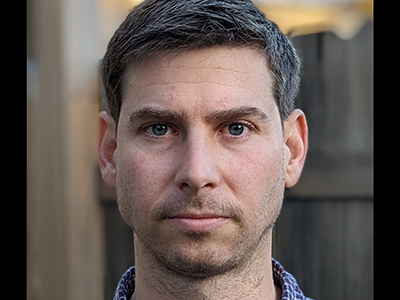
Citation
Lars Hansen stands apart through his integration of field-based insights, novel experimental work, innovative microstructural analyses and application of results to investigate a wide range of geodynamic processes. The impact of his work is extraordinary — and amenable to investigation by quantitative analysis of natural rocks and comparisons with geophysical data. He is a go-to expert on the application of lab data to investigate lithosphere rheology, processes that produce viscous and seismic anisotropy and the role of grain size evolution on strain localization. His most recent work on transient creep presages new understanding of why the effective viscosity of the mantle depends on the timescale of observation — a culmination of his integrative approach to process-based microphysics.Lars started his career in rock deformation by conducting experiments designed to investigate grain boundary sliding in mantle rocks. Although the importance of grain size-sensitive creep processes had been recognized for more than a decade, Lars completed the first suite of experiments designed to isolate important parameters required to quantify a flow law. His results indicate that grain boundary sliding is a dominant deformation mechanism throughout the upper mantle. Lars then developed innovative techniques to conduct large-strain torsion experiments to quantify relationships for strain localization, the development of crystallographic preferred orientation, and viscous anisotropy of mantle rocks.
Much of his recent work focuses on the strength of the mantle lithosphere. Here he and his students and postdocs leveraged and developed new high-resolution microscopy techniques to study the micromechanics of deformation processes. His analysis of scale effects for dislocation interactions during low-temperature plasticity provided important insights for understanding how to apply lab data to constrain the strength of the lithosphere. Previous data for olivine showed large scatter, a problem that plagued the rock deformation and geodynamics community for years. The solution lay in the effect of grain size on strength and a better quantification of strain hardening. By leveraging the physical insights gained from these studies, Lars developed innovative models and experiments to investigate transient creep that provide a new foundation for understanding processes that control glacial isostatic adjustment, postseismic relaxation and seismic attenuation.
Lars not only excels in research, but he is also a highly interactive and respected member of the broader solid Earth geophysics community. The respect he has garnered reflects both his incredible research insight and his ethos; he is a kind and thoughtful person who brings out the best in others.
— Greg Hirth
Brown University
Providence, Rhode Island
Field Photos
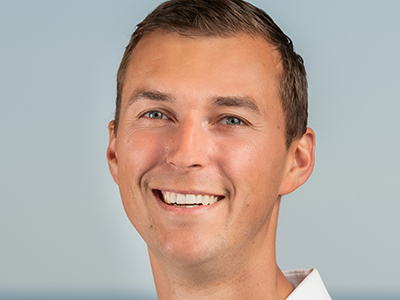
Citation
Scott Jasechko is leading a transformation in our understanding of hydrogeology by creating and analyzing continental- and global-scale compilations of hydrometric and isotopic data, guided by clever conceptual models of the underlying processes. Some key insights from Scott's work include that (a) global aquifers are dominated by fossil groundwater but they also contain, even at depth, a fraction of much younger waters, implying that they are vulnerable to modern contamination; (b) global rivers contain significant fractions of water that are only a few months old, implying that river waters are much younger than the aquifers that feed them, reflecting strong heterogeneities in subsurface residence times; (c) declining groundwater levels threaten the reliability of irrigation and drinking water supply across much of the United States and around the world; (d) water tables in coastal aquifers often lie below sea level, indicating significant potential for salinization; and (e) water tables near streams across the United States often lie below the stream surface, implying widespread risk of streamflow losses into underlying aquifers. Scott’s work recognizes humans as a central force in shaping large-scale hydrology. His work is alerting the world to the scale and extent of human re-plumbing of water flows and offering actionable knowledge for resource management at local to global scales.Scott Jasechko's contributions are notable not only for their scope but also for their thorough scholarship, their analytical rigor and their solid grounding in observations and data. Many of his papers have been based on first compiling all of the available data, worldwide, on a given topic. For example, for their papers on groundwater depletion and sustainability, Scott and his collaborator Debra Perrone spent years compiling water level measurements from over 39 million wells around the world. His landmark review of global isotope hydrogeology is 131 pages long, with 50 pages of references. This guy is thorough!
He is also the nicest guy you could ever hope to meet. Simultaneously inspiring, humble, generous and kind, he embodies AGU's motto of "unselfish cooperation in research." Scott thinks creatively and clearly, works incredibly hard and doesn't shy away from difficult scientific problems. The end result has been a series of outstanding insights into hydrology and hydrogeology, with continental- and global-scale implications for water quality and water resources sustainability. Thus, it is fitting that AGU has recognized Scott Jasechko with the Macelwane Medal for outstanding contributions to global isotope hydrology and hydrogeology.
— James W. Kirchner
ETH Zurich
Zurich, Switzerland
Response
I’m deeply honored to receive the Macelwane Medal.
I thank Jim Kirchner for selflessly making time to nominate me. I thank Ying Fan, Jeff McDonnell and Richard Taylor for supporting this nomination. Working with each of you has been one of the greatest professional joys of my life. You’ve taught me to ask big questions, do thorough science, and be a good collaborator.
I met many of my collaborators right here: at the AGU Fall Meeting. I thank each of them for working with me and for challenging me to do more than I think I can do.
In 2017, I joined the Bren School of Environmental Science and Management at the University of California, Santa Barbara. It has been a supportive and energizing place to work. At Bren, I work with economists, ecologists, engineers, lawyers and political scientists who share a common goal: to solve environmental problems. I am grateful to my colleagues in Bren — students, postdocs, staff and faculty — for making this job so great.
I thank my mom, dad, brother and grandmothers for their endless encouragement and inspiration. I thank my wife for her brilliance and support and for making science and life so fun.
— Scott Jasechko
University of California, Santa Barbara
Santa Barbara, California
Field Photos
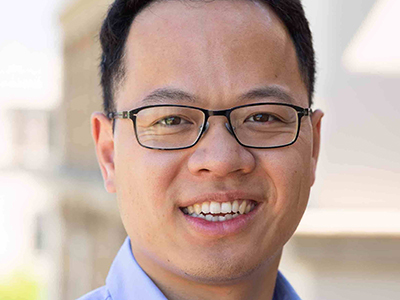
Citation
Zhongwen Zhan is an inspiring young seismologist who has fundamentally advanced our understanding of earthquakes and Earth structure while inventing seismic ocean thermometry. Among observationalists Zhongwen has been pushing seismic methods forward at a breathtaking pace while addressing a remarkable range of geophysical problems.Emerging as a leader in the resurgence of work on deep-focus earthquakes, Zhan has made important discoveries, stitched them together with existing ones, and advanced the hypothesis that two different styles of rupture occur in concert, one in the cold core of slabs and another outside in the warm mantle. Zhongwen discovered that deep-focus earthquakes can exhibit rupture at supershear speeds and that great deep events initially rupture rapidly before propagating slowly outside of the cold core of subducted slabs. A pathfinder in the explosive growth of ambient noise seismology, Zhongwen was one of the first to demonstrate the emergence of seismic body waves from noise correlations, allowing detection of features at depth.
Zhongwen Zhan has rapidly accelerated the use of fiber-optic cables as seismic sensors. Although these cables were originally developed in industry, seismologists have surged ahead to explore applications to fundamental geophysics, and many important firsts have been made by Zhongwen and his students. Illuminating dark fiber, they showed that distributed acoustic sensing could detect teleseisms and surface waves from remote earthquakes. Following the 2019 Ridgecrest, California, earthquakes, they created the largest fiber deployment to date and studied aftershocks and near-field seismic shaking in remarkable detail. But with existing methods limited to fiber lengths less than 100 kilometers, Zhongwen, never at rest, obtained access to fiber between Los Angeles and Chile and detected earthquakes and ocean-induced changes along the entire cable by monitoring anisotropy of the normal communication signals — a potentially transformative method for geophysical monitoring.
A long-sought-after target of physical oceanography is the monitoring of acoustic waves in the SOFAR channel to obtain stable averages of changes in ocean temperature. In an extraordinary breakthrough with his then postdoc Wenbu Wu, Zhongwen and others demonstrated that by using small repeating earthquakes they could infer subtle changes in wave speed and ocean temperature over 3,000 kilometers — a novel tool that promises to provide averages of changes in ocean temperature over an ocean basin.
— Michael Gurnis
California Institute of Technology
Pasadena, California
Response
Thanks, Mike, for the kind words and the nomination. I am a seismologist, so it is my great honor to receive the AGU medal named after James Macelwane, a pioneering American seismologist, the first one west of the Mississippi River.
I was drawn to seismology in 2005 after hearing an excellent public lecture by then a new professor at the University of Science and Technology of China, Sidao Ni, about the 2004 Sumatra earthquake. I was amazed by how much seismologists can learn from seismograms about structures and processes deep inside the Earth. After advising me on my master’s thesis, Sidao suggested I get a Ph.D. abroad. Eventually, I chose to work with his Ph.D. adviser, Don Helmberger, at the California Institute of Technology (Caltech) Seismo Lab. I am forever grateful for my student time with Sidao and Don.
Since my student time, I have been curious about many topics in seismology, such as ambient seismic noise, deep Earth structure, earthquake ruptures, deep earthquakes, the subduction zone and glaciers. I was lucky to get mentoring from various domain experts like Rob Clayton, Hiroo Kanamori, Mike Gurnis, Jennifer Jackson, Mark Simons, Victor Tsai and Peter Shearer. The curiosity has only expanded since I became a faculty member, and I am indebted to close collaborators like Jorn Callies, Alireza Marandi, Ruby Fu, Valey Kamalov, Miguel Gonzalez-Herraez, who are all outside geophysics and tolerated my ignorance in their fields. I have also been fortunate to work with an amazing team of students and postdocs at the Caltech Seismo Lab, who made all the accomplishments possible. I am super proud of them!
Finally, I want to thank my family, especially my parents; my wife, Qiong; and two daughters, Sophie and Mia, for their love and support.
—Zhongwen Zhan
California Institute of Technology
Pasadena, California
Field Photos
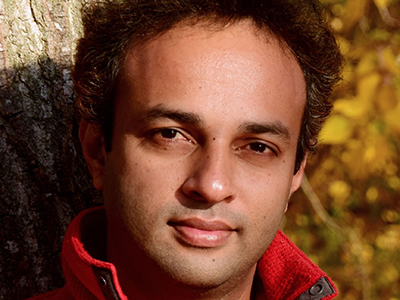
Citation
Roxy Mathew Koll is a climate scientist who has made significant contributions to the science, monitoring, forecasts and climate change projections for South Asia and the larger Indo-Pacific region. His research provides insights into the mechanisms and impacts of climate change on monsoon floods, droughts, cyclones, heat waves and the marine ecosystem. Roxy is among the scientists who have contributed to both modeling and observational aspects of the Indo-Pacific region’s climate with high-quality publications that have societal benefits. The observational and modeling framework that he has been a part of developing is valuable for weather forecasts, disaster management and climate change action plans in South Asia. His research has contributed immensely to understanding and predicting the impact of climate change on the Indian Ocean region, particularly monsoon rainfall and extreme events such as floods and droughts, with implications for food and water security of the region.Roxy was part of the team that developed the first Earth system model for South Asia, which now provides improved projections for monsoon and South Asian climate. The climate model development is in continuation of the efforts toward a seamless prediction of weather and climate and is consistent with his research and model development focusing on monsoon intraseasonal and interannual variability. His modeling efforts were followed up by an observational program that has greatly contributed to the science, monitoring, forecasting and projecting of the monsoon and the Indian Ocean region’s climate. As the chair of the Indian Ocean Region Panel (World Climate Research Programme’s Climate Variability and Predictability Program (CLIVAR)), he helped with the development of a new framework for the Indian Ocean Observing System (IndOOS). The redesign of the observing system was partly based on Roxy’s research on the cause and mechanism of the rapid warming in the Indian Ocean, its impacts on the South Asian monsoon and the marine ecosystem.
Roxy’s research is of importance for all monsoon countries, which host nearly half the planet’s population and are most vulnerable to global warming. The importance of the issues Roxy is addressing, his approach and his findings offer effective pathways for developing predictions and projections that can facilitate what-if scenarios for mitigation and adaptation to come what may under global warming in the coming decades over Africa, Asia and Australia.
Roxy has also focused on communicating his science to a general audience. He is also collaborating with citizen science networks, local governments and media to bring science to society.
— Raghu Murtugudde
University of Maryland
College Park, Maryland
Indian Institute of Technology Bombay
Mumbai, India
Response
I am excited and deeply honored that my work has been recognized by the American Geophysical Union. The AGU Devendra Lal Memorial Medal is a huge motivation for my attempts to understand climate science and use it for the benefit of society.
South Asia has become a poster child for climate change, and lives and livelihoods are lost in the frequent stampede of extreme weather events. Addressing this, and providing climate solutions, requires a concerted and consistent effort. I plan to continue addressing major problems in climate science and work more closely with the scientific community and society for that.
I dedicate this award to my family and friends who stood by me, always. My research career has been delightful due to students and collaborators across institutions and disciplines who make pursuing research in our field an absolute joy.
I am particularly grateful to Raghu Murtugudde, who has been an inspiration, mentor and critic for over a decade, to me and many other researchers.
My scientific pursuits found meaning when I began working closely with society for climate solutions. I thank these communities, organizations, policymakers and media in India for helping me bridge the gap between science and society. I am happy to hold hands with the Meenachil River and Rain Monitoring group in Kerala to help build climate-equipped schools and colleges for a resilient future.
Ensuring diversity and collaboration at the workplace are critical for advancing science, and I learned that by closely working with the Intergovernmental Panel on Climate Change and World Climate Research Programme/CLIVAR groups. I thank my institute, the Indian Institute of Tropical Meteorology, and the Ministry of Earth Sciences for providing the best resources and people to work with.
We must invest more in climate research and act swiftly on climate policies for a sustainable, resilient future.
This award is a motivation for me — and all researchers working at the forefront of climate change science.
— Roxy Mathew Koll
Indian Institute of Tropical Meteorology
Pune, India
